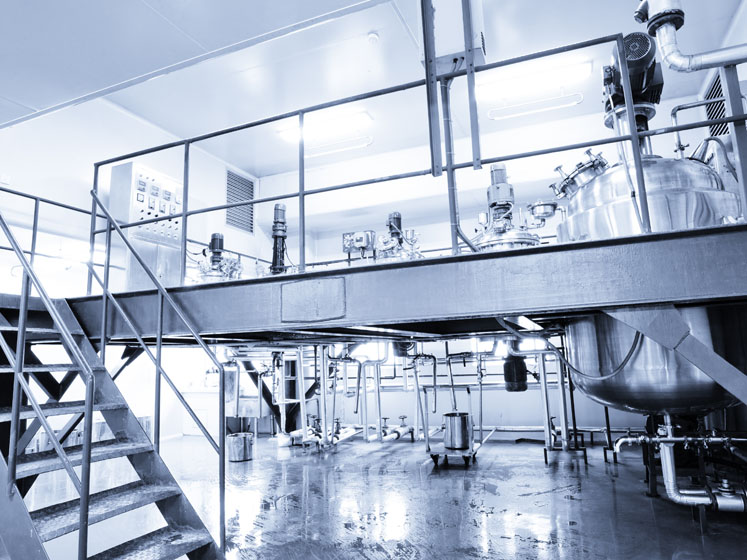Broken down, the majority of energy is consumed within the validated cleanroom areas of a manufacturing plant, which can typically use anywhere between two to 50 times more energy than non-validated areas.
Owing to the nature of the sector and its ultra-tight cleanroom controls, once the cleanroom temperature, humidity and differential pressures have been validated, alterations are rarely made. Any that are must be undertaken under strict conditions and stringent regulatory environments.
This can sometimes lead to a “set and forget” mentality that unfortunately pervades into the non-validated areas of a manufacturing facility and results in infrequent changes to the HVAC system — what you might call “set, adjust and forget.”
All of this leaves HVAC costs at best unregulated and, at worst, bordering on being out of control in some life science facilities. Crucially, this is all at a time when there is increasing pressure on manufacturing operations to control energy costs and improve their environmental footprint.
What is needed is a strategy that aggressively tackles HVAC consumption in non-validated areas and, at the same time, ensures that validation compliance in the cleanroom areas is achieved in the most efficient way. This two-stage process is aided by the fact that most life science sites will have two Building Management Systems (BMSs), for both their validated and non-validated areas.
The first big opportunity for facilities and maintenance teams is the often-neglected non-validated areas. This would typically include chillers, air handling units and the steam and hot water systems that are used both in the manufacturing process and also for general heating and cleaning to aid employee comfort.
Although the BMS is a vital component of running a commercial building, it is not the only source of information that should be considered when developing a coherent energy reduction strategy for a life science manufacturing site.
Equipment sensor data, electricity feeds, HVAC and utilities equipment data, along with weather and people data, should all be put in the mix. The danger for those responsible for energy consumption across a site is that real insight is difficult to find in the blizzard of data that can be collected from these disparate systems.

What’s needed is a platform that can turn all of this data into actionable insight. This is when specialist building analytics platforms that collect and analyse multiple datasets can be hugely effective. Sitting above the BMS, these platforms can transform metrics and insights from diverse areas such as building intelligence, machine learning and technical engineering support.
This information can then be translated into actionable information that can pinpoint inefficiencies and opportunities for improvement. For example, if the temperature in a non-validated area slips out of its normal range, it could be because of a number of potential reasons. The key lies in using data to pinpoint the root cause, be it a mechanical failure to a pump or a defective thermostat.
Another typical scenario would be the invisible wall that often separates operators and the FM team that can also lead to energy overuse. An operator could be asked to override a setting mid-shift, and then finish their shift without being told to revert to the original setting. The override setting that is intended to be short term is then left unchecked for longer than needed, consuming extra energy in the process.
A further problem for maintenance teams is prioritisation. It is not impossible for a maintenance manager to come into work each day and be faced with dozens of alarms that have sounded overnight, leading to what we call “alarm fatigue.” The question is: which ones are a priority?
All-too-often, we find maintenance teams who, driven by BMS alarms, are on a purely reactive footing. A better way is for alarms to be prioritised into those that require urgent attention and those that can be dealt with as part of a normal maintenance programme. This is often the first step in developing a more predictive approach to HVAC plant maintenance.
Many systems lack external human resourcing to help with prioritisation, which is why this new generation of platforms is underpinned by human “customer success” teams.
These personnel are tasked with identifying top priority fixes, such as the override being left on, which ensures they are dealt with immediately. This leaves the validated areas that facilities managers (FMs) and maintenance teams are often fearful of adjusting once validation has been achieved and parameters have been set.
A common problem is when tighter control bands on temperature and humidity are in place compared with what is actually needed. For example, a system could be validated to control relative humidity (RH) at 30–60%, but has a hard-line control on 45% RH, which consumes a much larger amount of electricity.
Another issue is when validated parameters are not maintained, which can lead to a variety of problems with validated areas. Typically, these include the over-delivery of air or when parameters for high-risk processes in the cleanroom are also used in lower risk areas, such as packing.
In these scenarios, the role of the building analytics platform is to determine whether validated settings are actually delivering the intended outcomes, and if they are doing so in the most efficient way possible. Ultimately, life science manufacturing has a big job to do in getting its energy consumption under control.
Non-validated areas are the low hanging fruit that can be dealt with quickly if the right information is given to FM and maintenance teams. But, dealing with non-validated areas can only be one part of a co-ordinated energy strategy that must also include the monitoring of validated areas to ensure that they do not, inadvertently and without anyone noticing, slip out of their predetermined ranges.
